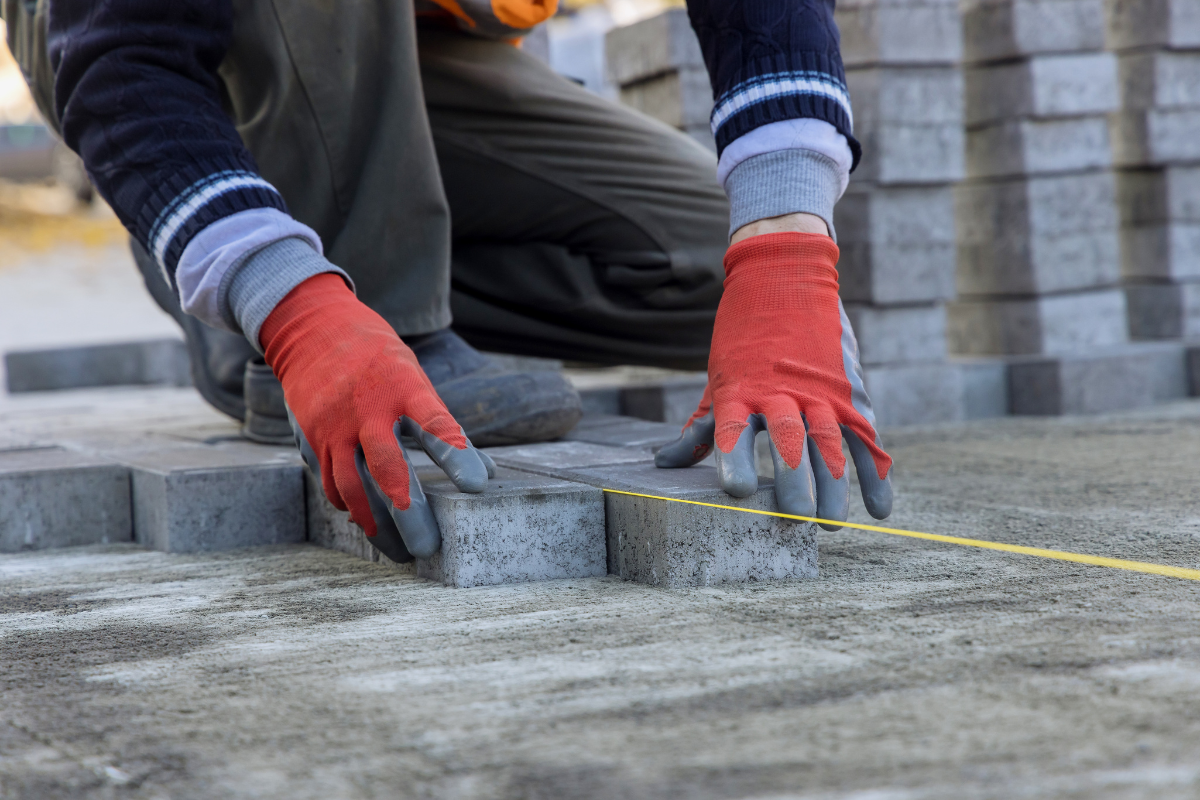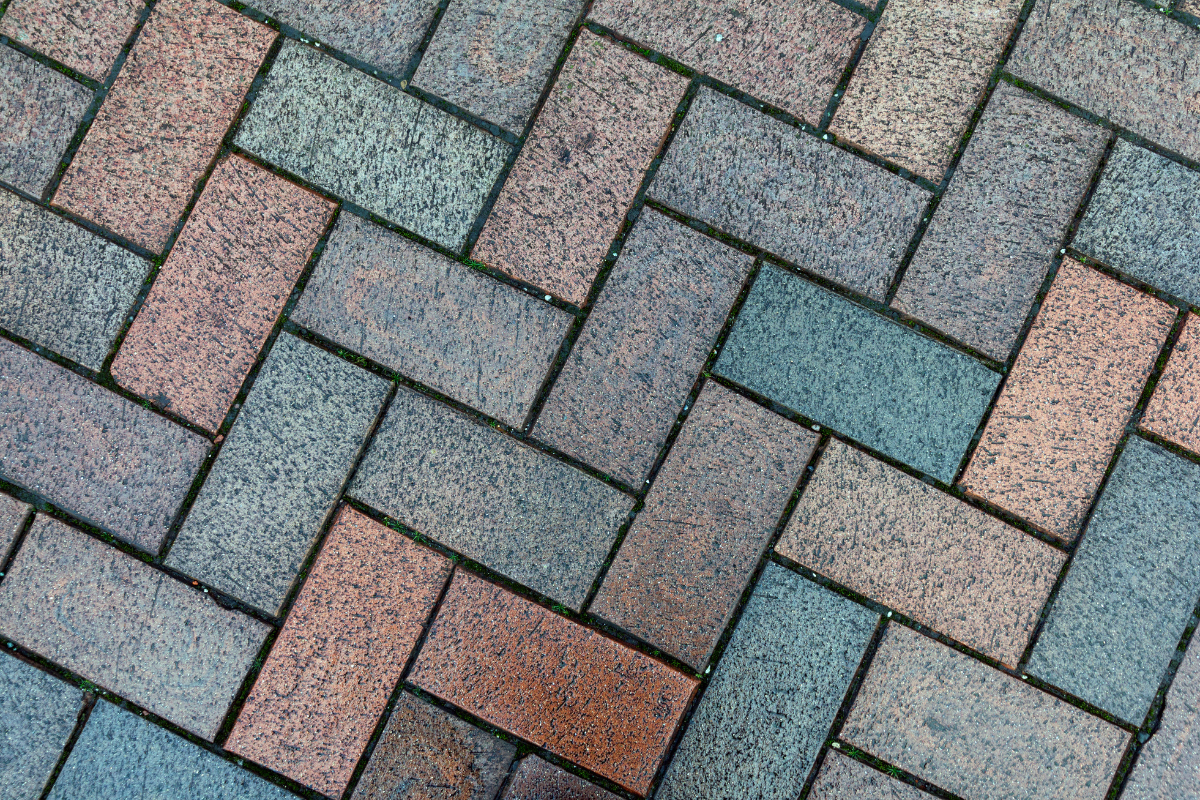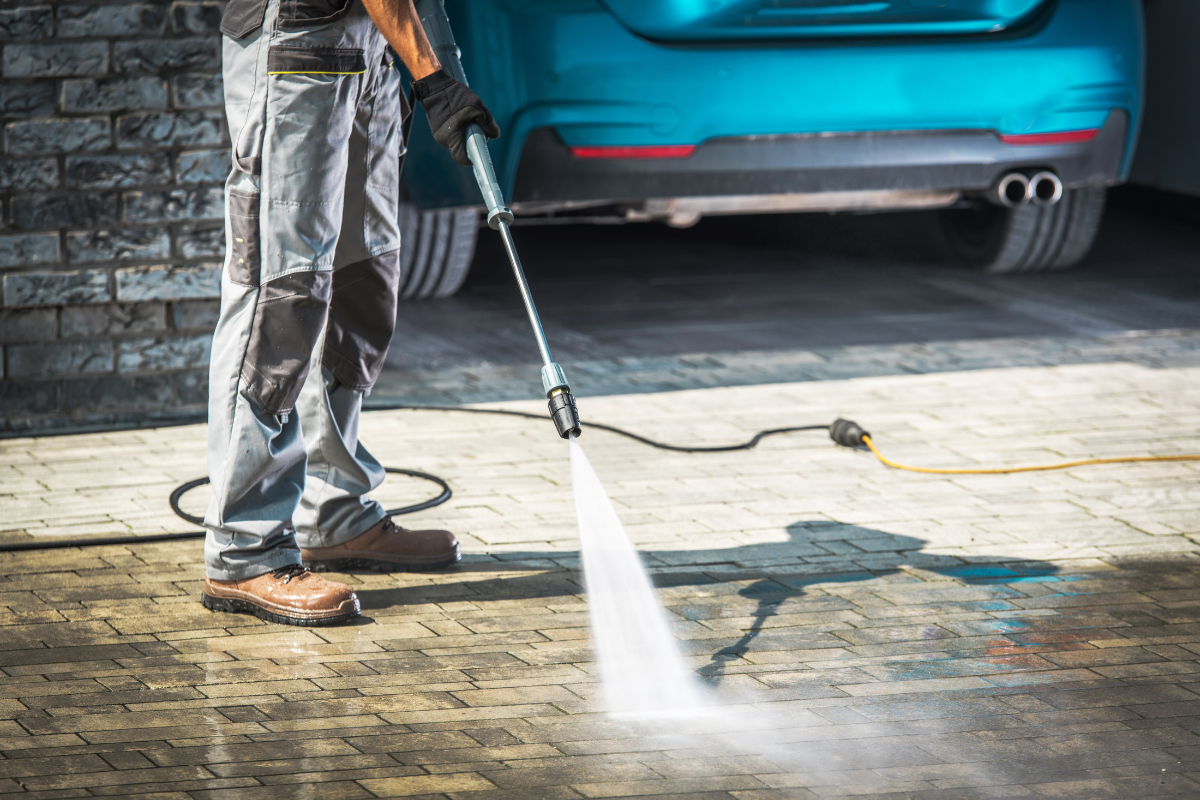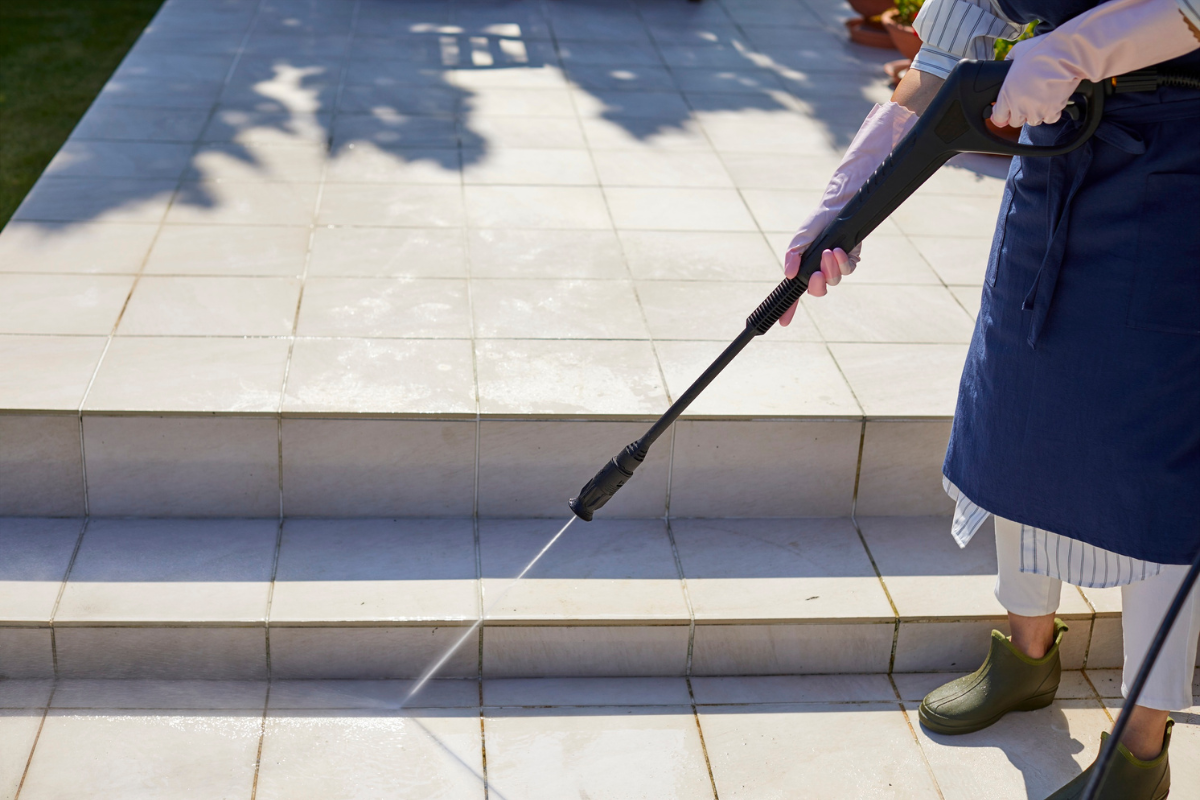
How to Evaluate a Quote for Paver Sealing Near Me



Paver sealing looks simple from the street, yet the difference between a driveway that still looks rich three rainy seasons from now and one that turns chalky within months usually comes down to what happens before and during the sealing. The quote you accept sets the tone for everything that follows. Price matters, but the line items and the contractor’s process tell you whether you’re buying durable protection or a gloss that fades after the first summer.
I’ve spent years around patios, pool decks, and driveways in neighborhoods where sand shifts, sprinklers overspray, and oak leaves stain. I’ve watched cheap sealer trap moisture and blush white, and I’ve seen well-prepped pavers shrug off automotive oil and barbecue grease. If you’ve been searching “paver sealing near me” or “driveway pressure washing near me,” here’s how to read a quote like a pro and avoid common traps.
What the best quotes actually include
A thorough quote reads like a plan, not a sales pitch. It explains how your surface will be cleaned, stabilized, and protected. It names the paver sealer by brand and chemistry, states square footage, and clarifies conditions that could change the price. When a quote fails to do that, you’re relying on hope.
Look for clear answers to these essentials:
- Surface preparation steps, including stain treatment and joint sand replacement, with square footage measured and noted.
- Sealer specification by brand, product line, and chemistry, with expected coverage rate and number of coats.
- Moisture and weather requirements, cure time, and return-to-service timeline for foot and vehicle traffic.
- Warranty terms that define what is covered, what voids coverage, and how touch-ups or failures are handled.
- Pricing structure that states exactly what is included, any potential add-ons, and payment schedule.
Those five items give you enough to compare proposals apples to apples. The rest of this article explains how to evaluate each one.
Surface preparation decides the lifespan
Sealer is only as good as the surface beneath it. I’ve seen seasoned contractors walk away from a job at 8 a.m. because the pavers were too damp from overnight dew and shade. That kind of judgment doesn’t show in a price alone, which is why the prep section of the quote matters so much.
Expect to see these elements explained in full sentences, not just buzzwords like “pressure washing” or “washing and sealing.”
Water pressure and technique. Most pavers clean well around 2,500 to paver sealing near me Lutz 3,500 PSI when paired with a rotary surface cleaner. Too much pressure concentrated through a wand strips the face of the paver and scars the sand bed. A responsible pressure washing service will pair the right PSI with flow rate and tip selection, and will rely on mechanical cleaning with a surface cleaner for large areas, not just a wand.
Detergents and stain treatment. Rust, tannins from oak leaves, and oil do not come out with water alone. Good quotes mention specific treatments like oxalic acid fence cleaning for rust or a dedicated degreaser for oil. They may specify a dwell time and whether spot scrubbing is included. If you see “general cleaning” with no mention of stain removal, assume stains that require chemistry are an add-on.
Efflorescence and mineral removal. White haze can come from efflorescence emerging from the concrete, sprinkler mineral deposits, or past sealer failure. Contractors who do a lot of paver cleaning in places like Lutz and other high-mineral water areas usually offer an efflorescence treatment, which is a separate chemical wash. It’s not always required, but the quote should state how they will determine the need and what it costs, because it can be laborious.
Joint sand removal and re-sanding. Sealing over compromised or missing joint sand sealer stripping and resealing is one of the top reasons for wobble, weeds, and water intrusion. If the quote doesn’t address joints, ask. Quality providers remove loose debris with a blower after cleaning, then sweep or wet-sand polymeric or ASTM C144 sand into joints to a specified depth, typically within 1/8 to 1/4 inch below the chamfer of the paver. They compact with a plate tamper to settle the sand, then remove residual dust before sealing. This takes time, but it stabilizes the field and locks things in place.
Drying time. Sealer and trapped moisture do not mix. The quote should mention the minimal dry time between washing and sealing. In humid months or shaded lots, pros will schedule washing one day, sealing the next. If a crew shows up planning to wash and seal within a couple of hours in midsummer humidity, expect a higher risk of hazing.
Sealer chemistry and why it matters
Not all paver sealer is created equal. The right chemistry depends on your paver type, porosity, color, exposure to sun and water, and the look you prefer. Quotes that simply say “seal pavers” leave too much room for interpretation.
Solvent-based acrylics. These create a film on top, deepen color, and range from natural matte to high gloss. They tend to enhance color more vividly than water-based options. They also can re-emulsify with automotive fluids and can trap moisture if applied to damp pavers. In hot climates, solvents flash quickly, which requires a confident hand and good ventilation.
Water-based acrylics. These are widely used because they are easier to apply and often more forgiving when it comes to moisture. Many are two-part formulations that crosslink into a tougher film. Sheens vary from natural to satin. A properly formulated water-based sealer can still color-enhance, though often a bit less than solvent products.
Silane/siloxane penetrating sealers. These soak in and change the surface tension so water and stains have a harder time penetrating. They leave a natural appearance, with no film. They are less prone to peeling or whitening since there is no surface film to fail. They don’t stabilize joint sand and won’t give that “wet look.”
Urethane and hybrid systems. Some contractors use urethane-modified acrylics or multi-step systems for higher traffic areas. These resist tire scuffing better than basic acrylics and can extend the service interval, but they require more careful prep.
A trustworthy quote lists the brand and product line, not just the chemistry. If a contractor won’t name the sealer, they either don’t know what they will use or they plan to swap products based on what is on the truck. Knowing the brand lets you check data sheets for coverage rates, recoat windows, and cure times.
Coverage rates and number of coats
Coverage varies with paver porosity, joint depth, and whether you want a film-forming finish. Porous tumbled pavers can consume double the sealer that a dense smooth paver requires. A realistic quote accounts for that.
As a rough starting point, film-forming acrylics often cover 100 to 150 square feet per gallon on the first coat and 150 to 250 on the second. Penetrating sealers can reach 150 to 250 square feet per gallon, sometimes more. If you see a flat “two coats included” with no mention of square footage or expected gallons, the price might look better because they plan to stretch a small amount over a big area. Ask for the expected gallons and coverage. You’re not trying to micromanage the crew, you just want assurance that the math works.
Also note whether the price assumes spray-only application or back-rolling after spraying. On textured pavers, back-rolling forces sealer into microtexture and evens out the sheen. It takes more time and a bit more material, but it usually produces a more uniform finish.
Joint stabilization and polymeric vs standard sand
If your pavers have wide joints, a polymeric sand adds a binding agent that locks the joints after activation with water and creates a harder crust that resists washout. Standard joint sand, properly compacted, also works and is often less expensive, but it won’t resist ant tunneling and heavy rain as well. Polymeric sand is not magic. If it is overwatered during activation or sealed before it cures, it can crust on the paver faces or create splotchy haze. If polymeric is part of the quote, it should specify the brand, color, and activation process, and it should show additional drying time before sealing.
On the other hand, with tight joints or interlocking pavers in a covered lanai, standard sand may be the smarter choice. It breathes better and is easier to maintain. The best contractors recommend based on conditions, not habit.
Moisture management and weather windows
I’ve had days in coastal neighborhoods when the air felt like a sponge. The surface looked dry at noon, but a moisture meter still read high. Moisture is the silent killer of good sealing jobs. Quotes that call out moisture testing show experience. A simple pinless meter reading or even a plastic-sheet test for an hour helps avoid trapping water.
Watch for details about weather. Most paver sealing products want daytime temperatures between roughly 55 and 95 degrees, with no rain in the forecast for at least efflorescence removal 12 to 24 hours. In humid climates, that window needs to stretch. If your yard gets irrigation overspray, ask whether the crew will cap sprinkler heads or set a timer to keep zones off for 24 to 48 hours. A single sprinkler cycle during cure can spot the finish.
Return-to-service timing matters too. Foot traffic can resume within hours. Vehicle traffic often needs 48 to 72 hours, sometimes longer for heavy SUVs on a sun-baked driveway. Good quotes state those times so you can plan cars and deliveries.
Visual finish and gloss expectations
When a homeowner says “wet look,” they might mean darker color with no shine, or mirror-like gloss. Quotes should reflect the vocabulary you actually care about. Ask for sample boards or a sealed test patch on a corner paver if you’re unsure. High gloss can look stunning on a rich red or charcoal paver, yet it can also show tire scuffs and any application laps. A satin finish hides more sins and still deepens color. Natural, or no sheen, preserves the original look while adding water and stain resistance.
Some products include a slip-resistant additive for pool decks. If a contractor plans to add traction sand to the second coat, the driveway jet wash quote should say so. It slightly changes the sheen and feel underfoot.
Warranty language worth reading
A one-year limited warranty that covers “adhesion failure” sounds reassuring until you realize it excludes whitening, tire scuffing, and hot-tire pickup. Read the fine print. Look for coverage of:
- Peeling or delamination on properly prepared surfaces.
- Whitening or blushing under normal use when moisture guidelines are followed.
- Joint sand washout within a defined period, if the contractor supplied the sand and sealing.
- Stain resistance claims stated as what the sealer can realistically resist, like motor oil wiped within a reasonable time.
Warranty length ranges from 6 months to 3 years depending on the product and environment. Short doesn’t always mean bad. In high-sun, high-traffic driveways, an honest 18-month film warranty can be better than a vague 5-year promise that excludes everything. Ask how warranty service works in practice. Will they strip and reseal if needed, or spot-treat?
Pricing structure and what affects it
You’ll typically see pricing per square foot. The range is wide because it reflects prep complexity and product choice. A basic wash and seal on a smaller, newer patio with tight joints and minimal staining sits at one end. A sun-baked driveway with oil spots, deep-set weeds, and missing sand sits at the other.
Add-ons that move the price:
- Efflorescence or rust treatment, because they require acids or specialty cleaners and neutralization.
- Re-sanding with polymeric sand, which costs more and takes extra labor and activation time.
- Stripping old sealer, which can triple the prep time. Stripping removes failed film and often requires solvents, hot water, and a lot of rinsing.
- Specialty sealers like urethane-modified products for heavy vehicle use.
- Access issues, like limited water supply or a long hose run.
If a quote seems low relative to others, trace it back to one of these missing or underpriced elements. Ask the contractor to break out the prep from the sealing material and labor. Legitimate professionals have no trouble showing how the price is built.
Crew size, equipment, and schedule
A single tech with a 2.5 GPM pressure washer and a pump sprayer can only accomplish so much in a day. Larger crews with 4 to 8 GPM machines, surface cleaners, and dedicated sealer sprayers run faster and more consistently. Neither is automatically better, but the quote should match the reality of your site. If you have 2,000 square feet of driveway and a pool deck, a timeline that promises same-day wash, sand, and seal with a two-person crew in humid weather is optimistic at best.
Ask for the schedule flow. Many reputable contractors stage it across two days: day one for pressure washing and stain treatment, day two for re-sanding and sealing. In drier months or on well-draining pavers, they may compress that, but only after moisture checks.
Health, safety, and what that means for you
Solvent-based sealers produce strong fumes during application and initial cure. On a covered lanai with pets and kids inside, that can be uncomfortable. Water-based products are friendlier for enclosed spaces. Either way, the quote should advise on ventilation and whether you need to keep windows closed or HVAC intakes off during application.
For pool decks, make sure the plan includes protection of the water. Contractors should block the weir and skimmer, cover nearby coping or tile, and prevent sealer from flashing onto the water surface where it can create a film. If you’ve hired a pressure washing service before, you already know that overspray travels. Taping and masking are small details that save headaches.
What “paver cleaning Lutz” really implies about local conditions
If you live in or near Lutz or similar Gulf Coast communities, a few local factors should show up in the quote:
Sprinkler overspray. Well water mineral content leaves orange or white stains that are not dirt. A line item for rust and mineral cleanup signals experience. If you want the stains gone, the quote needs to price that chemistry.
Humidity and shade. Oak and palm canopy keep patios damp. A contractor should plan longer dry times and may suggest a water-based sealer that tolerates a slightly higher moisture content before application.
Sand washout and heavy rains. Driveways at the bottom of a slope see faster joint erosion. Polymetric sand might be worth the upcharge in those locations. Here, I like to see the contractor note drainage patterns and advise on sand selection.
Mildew pressure. Shaded pavers grow algae. Some sealers include mildewcides, which can extend the time between cleanings. Your quote might mention an optional maintenance wash twelve months out, which is a sign they think long term.
How to compare “washing and sealing” packages fairly
When you have two or three quotes on the table, normalize them before choosing. Start with the square footage each measured. One contractor might have measured the driveway only while another included the walkway and side yard. Align the square footage, then note:
- Prep: Are they both doing stain treatment, efflorescence wash if needed, and re-sanding to a specified joint depth?
- Sealer: Same chemistry, brand, and sheen? Similar coverage rates and number of coats?
- Timeline: Similar drying windows, expected return to service, and weather contingencies?
- Warranty: Comparable term and conditions, including whitening coverage?
- Maintenance plan: Any included follow-up cleaning or discounted reseal within a time window?
Once the scope is aligned, price comparisons start to mean something.
Red flags I’ve learned to spot
I keep a short list of lines that make me cautious. If you see these in a quote, ask for clarification or keep looking.
We’ll decide the sealer on site. That usually means whatever was cheapest or available. Good contractors standardize products for predictability.
We guarantee no whitening. No one can guarantee that without controlling moisture and substrate conditions. A more honest statement is that they test moisture and won’t seal if the pavers are too damp, reducing the risk of whitening.
One coat is enough for everything. Sometimes true for dense pavers with penetrating products, but film-formers on porous surfaces need two thin coats. One heavy coat is the fastest way to trap moisture and cause milky areas.
Same-day wash and seal in any weather. In dry, breezy weather, maybe. In humid or shaded conditions, that’s risky. A professional will condition the answer on weather.
No need to re-sand. If your joints are low or missing, sealing won’t fix that. Sealer cannot replace sand. It can lock sand in place if it’s to the proper height.
Maintenance and realistic expectations
A good sealer gives you a head start, not permanent immunity. Oil drips and barbecue grease still need to be cleaned promptly. Tire scuffs on high-gloss films can appear if you turn wheels while stationary. Expect to do a light maintenance wash once or twice a year, especially in shaded areas. Plan on resealing every 18 to 36 months for film-formers, or every 3 to 5 years for penetrating sealers depending on exposure. The quote should suggest a maintenance interval that matches your site.
If you prefer to bundle maintenance, ask whether the contractor offers a scheduled wash and inspection at 12 months. Many pressure washing providers tie that into their service calendar. That way, you catch trouble early, and they keep a relationship with the surface they sealed.
A brief note on driveway pressure washing near me searches
If you started with “driveway pressure washing near me,” you might receive quotes from general cleaners who can wash anything and also offer sealing. Some are excellent. Others treat sealing as an add-on. What separates a pressure washing service that seals well from one that simply sprays is attention to sealer selection, moisture checks, joint sand work, and staged scheduling. When a quote reads like a cleaning menu rather than a surface protection plan, ask for more detail or bring in a specialist.
What I’d expect to see on a model quote
Imagine a 1,200 square foot brick paver driveway and 400 square foot walkway and entry. The quote that makes me comfortable includes:
- Measured total square footage and a sketch or photo markup confirming areas. Notes mention oil drips near the garage and sprinkler rust on the right side.
- Cleaning plan: 3,500 PSI surface cleaner, degreaser pre-treat for oil, oxalic rinse for rust. Rinse and blow out joints. Weather condition: reschedule if forecast humidity exceeds 85 percent during application window.
- Joint sand: ASTM C144 tan sand compacted with plate tamper to 1/8 inch below chamfer. Polymeric offered as an option with added cost and extra curing day.
- Sealer: Brand and line named, water-based two-part acrylic, satin finish, two coats. Target coverage 100 to 150 square feet per gallon on first coat, 150 to 200 on second. Sprayed and back-rolled.
- Dry times and access: Wash day one morning, sand and seal day two mid-day if moisture readings allow. Foot traffic in 4 hours, vehicle traffic in 48 to 72 hours. Irrigation off for 48 hours, contractor will cap nearby heads during work.
- Warranty: 18 months against peeling and whitening under normal use if moisture and weather conditions followed. Excludes hot-tire pickup during first 7 days and chemical spills left in place longer than 24 hours. One free touch-up visit for isolated issues within 60 days.
- Price: Per square foot rate with line items for rust treatment and polymeric sand option. Payment terms 50 percent on scheduling, balance upon completion after walkthrough.
That level of clarity spares both sides the awkward conversations later.
When a low price still makes sense
There are times when a lean quote is exactly right. A newer patio with dense pavers under a covered porch may need little more than a light wash and a penetrating sealer to repel wine and food stains. Minimal joint work, easy access, and low sun exposure reduce time and materials. If a contractor explains why the job is straightforward and prices accordingly, that’s not a shortcut. It’s good judgment. The key is that they can articulate the why, not just the what.
Simple questions that reveal a lot
You don’t need to be a chemist to hire well. Ask three practical questions:
- Which specific paver sealer are you using, and what coverage are you planning for each coat on my surface?
- How do you determine if the pavers are dry enough to seal, and what happens to the schedule if they aren’t?
- What joint sand are you using, to what depth, and how do you compact it?
If the answers are confident, specific, and align with the site conditions you see, the rest usually falls into place.
Setting yourself up for success on the day of service
You can help the crew deliver their best work. Move cars the night before so the driveway can stay empty. Set the irrigation controller to skip a cycle. Clear planters and furniture from the edges. If pets have access to the area, plan for them to stay inside or in a different part of the yard until the surface is dry to the touch. Small things, but they keep the day smooth and make the finish more uniform.
Final thought before you sign
Paver sealing is part chemistry, part craft. The right pressure washing and sealing workflow protects your investment and keeps the surface looking the way you intended. A careful quote doesn’t read fancy. It reads complete. Whether you are comparing paver cleaning in Lutz or a pressure washing service two towns over, put your focus on prep, product, moisture, and maintenance. Price then becomes a reflection of a plan you understand, not a mystery number you hope works out.
Bulletproof Pavers
Address: 1523 Green Meadow Dr, Lutz, FL 33549
Phone: (813) 401-0693